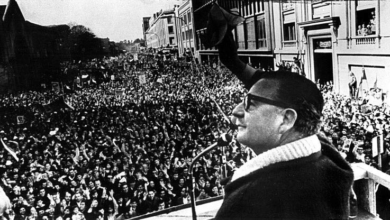On Aug. 22 and Aug. 25, thousands of Chilean high school students and their supporters took to the streets to demand that the government stop putting off the implementation of reforms won by struggle earlier this summer. Police attacked the protests and arrested a total of 267 people.
The protests were a continuation of a fierce struggle that students waged earlier this summer. Chilean president
 |
High school students responded by occupying 13 high schools in Santiago, Chile, in anticipation of Bachelet’s May 21 national address. Following the address—in which Bachelet made no mention of the students’ protest—the occupations spread and protests began.
Over the next several months, the struggle transformed from a defensive reaction to the proposals to a wide-reaching offensive struggle with a slate of progressive and militant demands. The core demand of the student movement is the reform of the Organic Constitutional Law on Teaching (LOCE). The LOCE was instituted by the Pinochet dictatorship in March 1990; it opened the door to the privatization of education. One of its most onerous components removed the central government’s responsibility for financing the country’s education system and shifted it to underfinanced municipalities. This effectively institutionalized a growing gap between rich and poor schools.
The students’ demands also include free transportation passes for all students, free high school college qualifying exams—the current cost is $40—increased funding for schools, a shorter school day, and free lunches for poor students.
Today, fewer than 10 percent of Chile’s poorest students go to college while 65 percent of the richest students attend. According to Rodrigo Olivares, president of the Federation of Students in Solidarity (FESOL), “The average cost of college is $4,000 a year. Only 30 percent of high school students make it to college, and working-class families can’t afford their kids’ meals and transportation fares.”
Less than a month after the initial school occupations, students occupied over 1,000 high schools, and two major demonstrations—on May 30 and June 5—involved more than 600,000 and 1 million students and their supporters, respectively. The protests effectively became a three-week-long strike that didn’t end until June 13.
Students get organized, score victories
The Coordinating Assembly of High School Students (ACES) has been in the leadership of the student movement. ACES was formed by a merger of FESOL, the Communist Youth, and the Socialist Youth earlier this year. The assembly is composed of two delegates from each high school. The delegates, in turn, elect the 34-person committee to negotiate with the government. This committee also directs the protests.
The students have been highly organized and militant. During the school occupations, the student leaders created commissions for defense, food, financing and other necessary activities.
Other sectors of the social movement and Chilean society in general have expressed a high degree of support for the student strikes. According to opinion polls, 87 percent of the population supports the students’ actions. Even the Ministry of Education workers respected the strikes and refused to go to work. The Association of Parents and Supporters of Secondary Students, along with university students and professors, have all organized for and participated in the demonstrations.
Constant protests and paralyzing strikes have forced the capitalist government to take progressive action. The government initially responded with brutal repression and then offered a set of concessions that didn’t fully address the students’ demands. But instead of accepting the offer, the students organized the second major strike.
Negotiations between the government and the student movement eventually produced an agreement. The government set up a 73-member presidential educational advisory council, which includes 12 student members, to propose reforms to the LOCE. Bachelet was also forced to offer $192 million in emergency funding for school repairs, food aid, and free college admission tests. The students have not yet won free transportation.
The student movement agreed to the council, while expressing reservations, and on June 16, set up their own council to monitor the government-created one.
“We won a lot through our mobilization but there’s still a lot left to fight for even if we did garner a victory,” student organizer Maria Jesus Sanhueza told the AP in June.
Last week’s protests reflect the growing disaffection of the student movement with the presidential council. Most believe the council is proceeding too slowly without the implementation of meaningful reforms. These protests surely are not the end of the Chilean high school students’ militant struggle.






